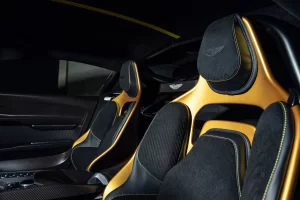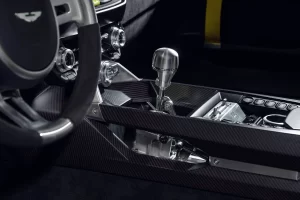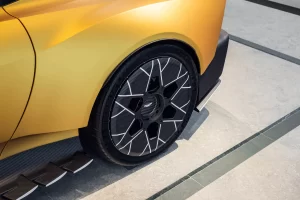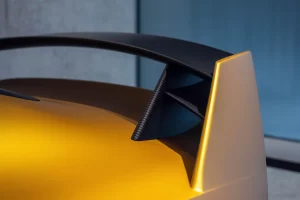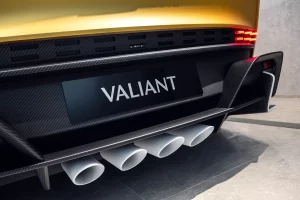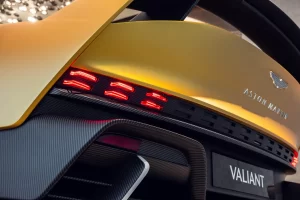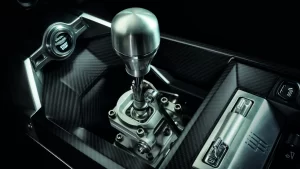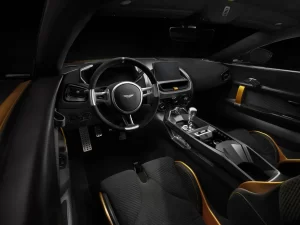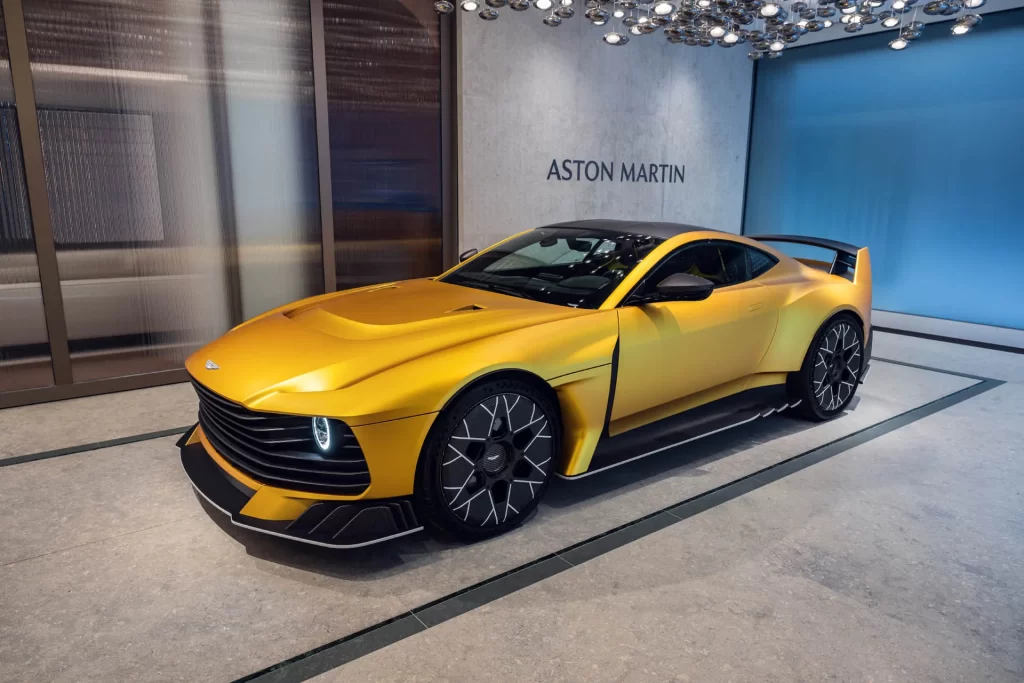
Aston Martin unveiled the Valiant late on Tuesday as a more hardcore successor to its Valour sports car, which was launched last year to celebrate the company’s 110th anniversary.
The concept for the Valiant originated from Aston Martin’s F1 star, Fernando Alonso. He tasked the Q by Aston Martin personalization department with creating a lighter, more extreme version of the Valour for track use while still being street-legal.
Aston Martin decided to produce a limited run of Valiants. A total of 38 units will be made available for worldwide sale, and all slots are already taken, according to the automaker. This makes the Valiant rarer than the Valour, which had a production run of 110 cars. Both models feature retro styling inspired by the DBS V8-based RHAM/1 race car, known as the Muncher, which competed in multiple 24 Hours of Le Mans races in the 1970s.
Like the Valour, the Valiant is powered by Aston Martin’s twin-turbocharged 5.2-litre V12, but it’s tuned here to deliver 734 hp (547 kW), which is 29 hp more than the Valour. The front-mounted engine is paired with a 6-speed manual transaxle featuring an exposed gear linkage and sends power to the rear wheels only.
Aston has not disclosed pricing for the 38 Valiants that will be sold, but it is understood that each will cost close to £2 million and feature high levels of customisation.

The shifter’s design aids in weight reduction, a key focus in the Valiant’s design. Other weight-saving measures include a 3D-printed rear subframe saving about 6.6 pounds (3 kg), a magnesium torque tube saving approximately 19 pounds (8.6 kg), a lightweight battery saving 25 pounds (11.3 kg), and 21-inch magnesium wheels saving almost 31 pounds (14 kg). The Valiant also features lightweight carbon-ceramic brake rotors.
The Valour’s chassis was upgraded with Multimatic’s Adaptive Spool Valve dampers, capable of simultaneously adjusting each damper to one of 32 profiles in less than six milliseconds.
New aerodynamic elements, such as a new splitter, rear wing, and rear diffuser, have been added to generate downforce for track driving. The diffuser now houses four exhaust tips instead of the Valour’s three, and the exhaust system is made of lightweight titanium.
The body of the Valiant is crafted almost entirely from carbon fibre, including a new full-width grille. Exposed carbon fibre is also featured in many areas of the cabin, such as the doors and centre console. Inside, you’ll find Recaro Podium seats and a steel half-cage with anchor points for four-point harnesses.
Although Aston Martin has phased out manual transmissions from its core lineup, special editions like the Valour and the new Valiant allow the automaker to continue offering cars with three pedals. Aston Martin has stated that it will continue to provide such cars as long as there is sufficient demand.







